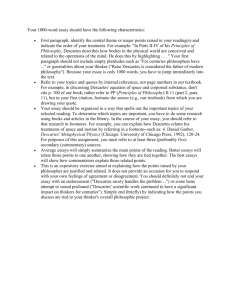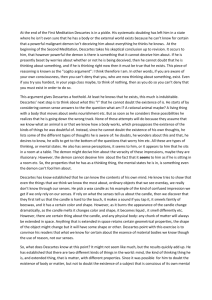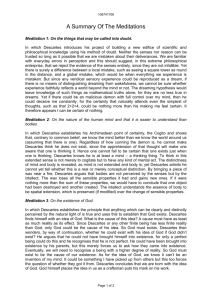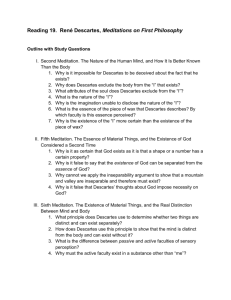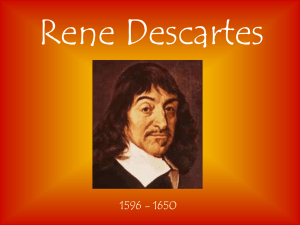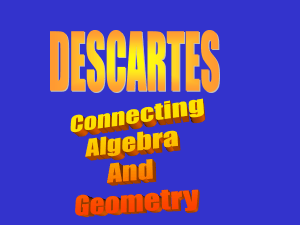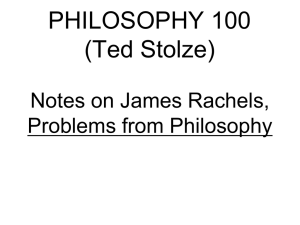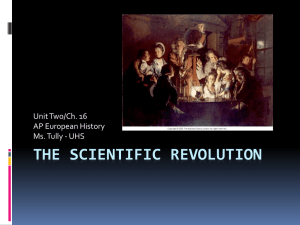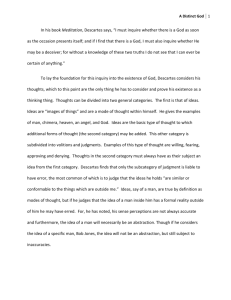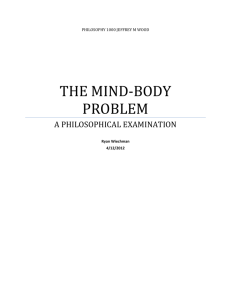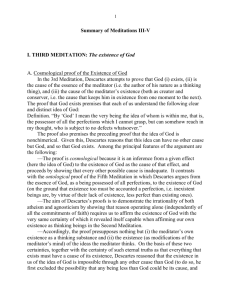Introduction to Philosophy
advertisement
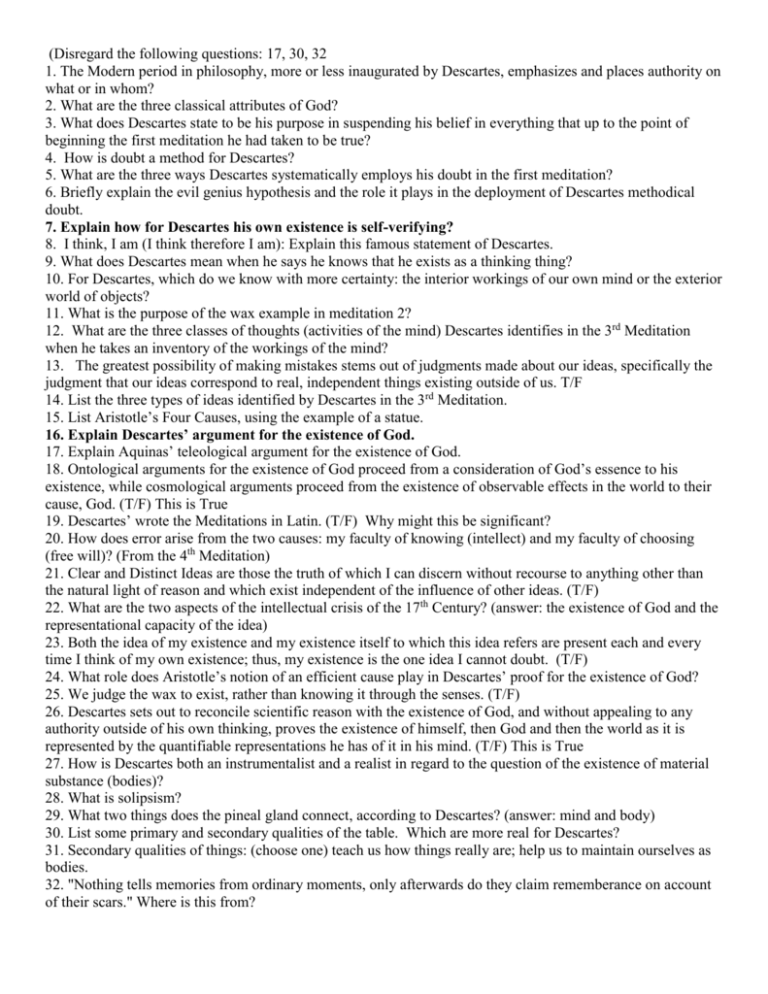
(Disregard the following questions: 17, 30, 32 1. The Modern period in philosophy, more or less inaugurated by Descartes, emphasizes and places authority on what or in whom? 2. What are the three classical attributes of God? 3. What does Descartes state to be his purpose in suspending his belief in everything that up to the point of beginning the first meditation he had taken to be true? 4. How is doubt a method for Descartes? 5. What are the three ways Descartes systematically employs his doubt in the first meditation? 6. Briefly explain the evil genius hypothesis and the role it plays in the deployment of Descartes methodical doubt. 7. Explain how for Descartes his own existence is self-verifying? 8. I think, I am (I think therefore I am): Explain this famous statement of Descartes. 9. What does Descartes mean when he says he knows that he exists as a thinking thing? 10. For Descartes, which do we know with more certainty: the interior workings of our own mind or the exterior world of objects? 11. What is the purpose of the wax example in meditation 2? 12. What are the three classes of thoughts (activities of the mind) Descartes identifies in the 3rd Meditation when he takes an inventory of the workings of the mind? 13. The greatest possibility of making mistakes stems out of judgments made about our ideas, specifically the judgment that our ideas correspond to real, independent things existing outside of us. T/F 14. List the three types of ideas identified by Descartes in the 3rd Meditation. 15. List Aristotle’s Four Causes, using the example of a statue. 16. Explain Descartes’ argument for the existence of God. 17. Explain Aquinas’ teleological argument for the existence of God. 18. Ontological arguments for the existence of God proceed from a consideration of God’s essence to his existence, while cosmological arguments proceed from the existence of observable effects in the world to their cause, God. (T/F) This is True 19. Descartes’ wrote the Meditations in Latin. (T/F) Why might this be significant? 20. How does error arise from the two causes: my faculty of knowing (intellect) and my faculty of choosing (free will)? (From the 4th Meditation) 21. Clear and Distinct Ideas are those the truth of which I can discern without recourse to anything other than the natural light of reason and which exist independent of the influence of other ideas. (T/F) 22. What are the two aspects of the intellectual crisis of the 17th Century? (answer: the existence of God and the representational capacity of the idea) 23. Both the idea of my existence and my existence itself to which this idea refers are present each and every time I think of my own existence; thus, my existence is the one idea I cannot doubt. (T/F) 24. What role does Aristotle’s notion of an efficient cause play in Descartes’ proof for the existence of God? 25. We judge the wax to exist, rather than knowing it through the senses. (T/F) 26. Descartes sets out to reconcile scientific reason with the existence of God, and without appealing to any authority outside of his own thinking, proves the existence of himself, then God and then the world as it is represented by the quantifiable representations he has of it in his mind. (T/F) This is True 27. How is Descartes both an instrumentalist and a realist in regard to the question of the existence of material substance (bodies)? 28. What is solipsism? 29. What two things does the pineal gland connect, according to Descartes? (answer: mind and body) 30. List some primary and secondary qualities of the table. Which are more real for Descartes? 31. Secondary qualities of things: (choose one) teach us how things really are; help us to maintain ourselves as bodies. 32. "Nothing tells memories from ordinary moments, only afterwards do they claim rememberance on account of their scars." Where is this from?
